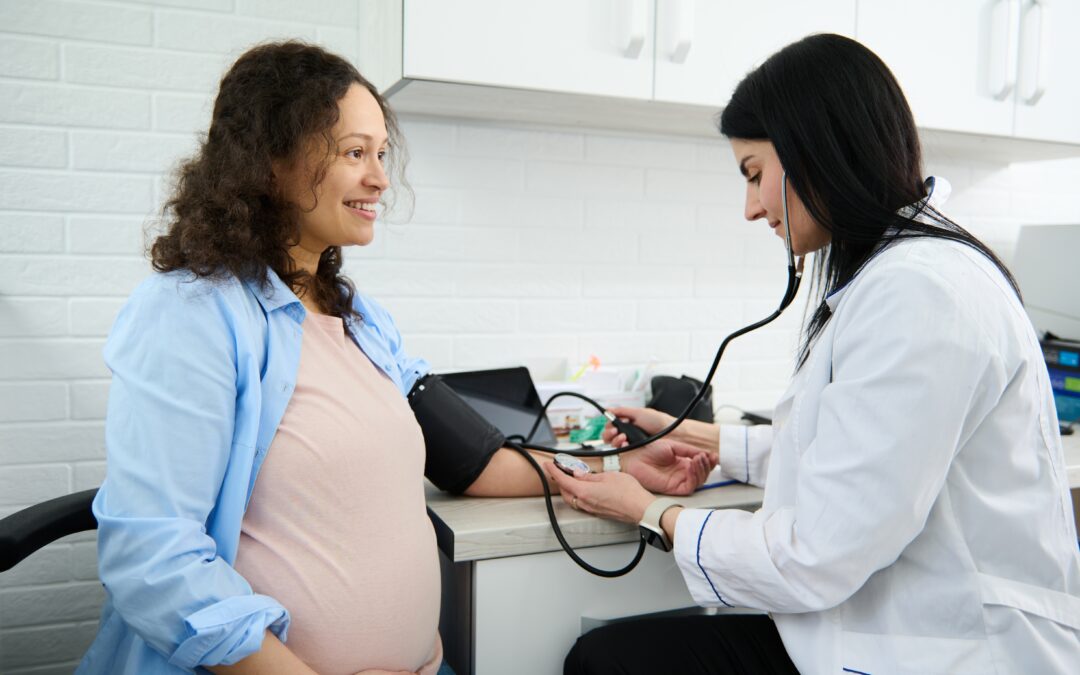Community First Chief Medical Officer Jessica Yao, MD, contributed to this blog.
Pregnancy can be a confusing time. Your body is going through a lot of changes, and it can be
hard to tell what’s normal and what’s not. Learning more about the signs and symptoms
of preeclampsia can help you identify a problem early.
What is preeclampsia?
Preeclampsia is a dangerous condition that affects pregnant women and their babies, usually
after the 20th week of pregnancy or up to 6 weeks after delivery. Any woman can have
preeclampsia, but some women have a higher risk than others. Preeclampsia symptoms may
include:
-
- High blood pressure.
- Protein in urine.
- Swelling of the face or hands.
- Headaches that won’t go away.
- Nausea after the 20th week of pregnancy.
- Changes in vision or seeing floaters in your eyes.
Preeclampsia can cause serious problems like kidney or liver damage or even death. This is why
it’s very important to see your doctor regularly during your pregnancy, so they can monitor you
for any signs or symptoms of preeclampsia. Your blood pressure and weight should be checked at
each prenatal appointment. Don’t miss your appointments! And don’t be afraid to ask your doctor
about your numbers or test results.
Risk Factors
If you are at higher risk of preeclampsia, it is even more important to talk to your doctor about
prevention and treatment and monitor yourself for symptoms. Higher risk factors include:
-
- Being Black.
- Being obese.
- Being older than 35.
- Experiencing your first pregnancy.
- Being pregnant with multiple babies (e.g., twins)
- Getting pregnant through In Vitro Fertilization (IVF).
- Having a history of hypertension or high blood pressure in general.
- Having a lower income (due to inequities that create a higher risk of illness and maternal
mortality rates). - Having a history of preeclampsia, gestational hypertension, or other complications during
a previous pregnancy.
Treatment and care
Good prenatal care is the most important way to stay healthy during pregnancy. For women with preeclampsia, their doctor may ask them to come into the office for testing more often and will give them instructions on monitoring their signs and symptoms at home. Women with severe
preeclampsia may need to stay on bed rest until delivery. The only “cure” for preeclampsia is
giving birth. For this reason, many pregnant women with preeclampsia may give birth earlier
than expected, based on their doctor’s recommendations.
Women who experience preeclampsia have healthy babies all the time and live long lives. The key
is early detection and working with their doctors to monitor any symptoms.
For more information on preeclampsia, talk to your doctor, check out our health tip sheet on
Preeclampsia, or visit the Preeclampsia Foundation website.
Pregnancy Support
We hope all eligible, pregnant Community First Members will sign up for our Healthy Expectations class, for helpful pregnancy and labor health education, useful resources you can use at home, and a free Mommy & Me baby shower where you can earn gift cards and gifts such as a car seat or Pack and Play*. Healthy Expectations Members can also join in our nine-month program, Maternal Community Health Club, where you will work with Health Educators, meet other moms-to-be, and get more self-care and baby gifts.
*Limitations and restrictions apply. Call 210-358-6055 or email healthyhelp@cfhp.com for more information.

